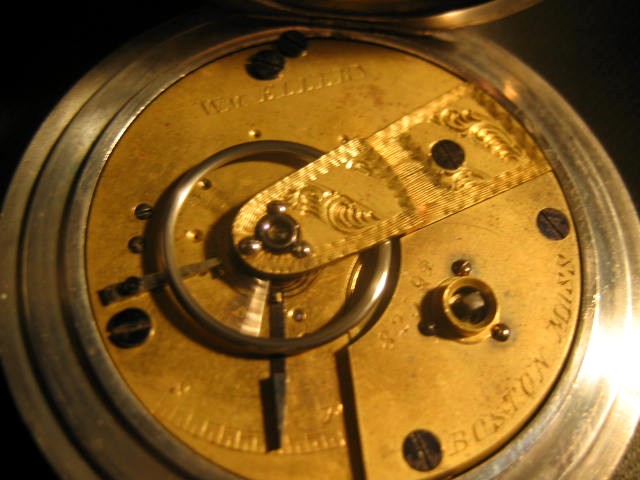
| WWT Shows | CLICK TO: Join and Support Internet Horology Club 185™ | IHC185™ Forums |

|
• Check Out Our... • • TWO Book Offer! • |
Welcome Aboard IHC185™  Internet Horology Club 185
Internet Horology Club 185  IHC185™ Discussion Site Main Page
IHC185™ Discussion Site Main Page  Open to the World RESEARCH FORUMS
Open to the World RESEARCH FORUMS  Illinois Watch Company Research Forum
Illinois Watch Company Research Forum  what is "unadjusted?"
what is "unadjusted?"
 Internet Horology Club 185
Internet Horology Club 185  IHC185™ Discussion Site Main Page
IHC185™ Discussion Site Main Page  Open to the World RESEARCH FORUMS
Open to the World RESEARCH FORUMS  Illinois Watch Company Research Forum
Illinois Watch Company Research Forum  what is "unadjusted?"
what is "unadjusted?"Go  | New Topic  | Find-Or-Search  | Notify  | Tools  | Reply to Post  |  |
| IHC Life Member |
Steve, my understanding is the split bi-metallic balance wheel Compensates for major timing errors caused by stiffness changes of the balance (hair) spring in the usable temperature range of about 40 Deg F (4.5 deg C) to 99 Deg F (37 Deg C). When the watch is Adjusted for temperature, it has been cycled from hot to cold and the poised balance wheel weights are actually moved in pairs around the arms of the wheel to optimize temperature drift. Oddly, this actually de-regulated the watch in the mid-range of the adjustment, an annoying problem that was finally "solved" with the elinvar movements. So in short, "unadjusted" means just that, no work was done to adjust for temperature or positions, but the watch was equipped with a split temperature compensating balance wheel. Does that help? | |||
Yes, thanks. I have an early P S Bartlett that has a solid balance wheel. It's very interesting to trace the development of the technology. | ||||
| IHC Life Member |
Steve, some of the early American Watch Co (Waltham) movements had swiss-made (or copied) solid Balance wheels (pic) and were also somewhat "adjusted" but mostly for position. Some later watches like some Elgins and low cost (export?) Walthams had solid brass uncut wheels with balance weights added to bring them to the correct rate for the Balance (hair) spring they had. These were never adjusted for anything at all.  | |||
I think it is interesting to consider that as the technology developed the watches themselves participated or facilitated the culture that placed higher demands on the craft. It went in a constructive cycle that propelled society in the direction that placed higher requirements on the instruments. I see the whole study of watches as a gradual shift from an emphasis on craft to an emphasis on technology. At least, that's one way to look at it. | ||||
| Powered by Social Strata |
| Your request is being processed... |
|
©2002-2025 Internet Horology Club 185™ - Lindell V. Riddle President - All Rights Reserved Worldwide

